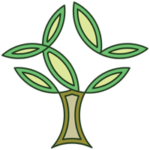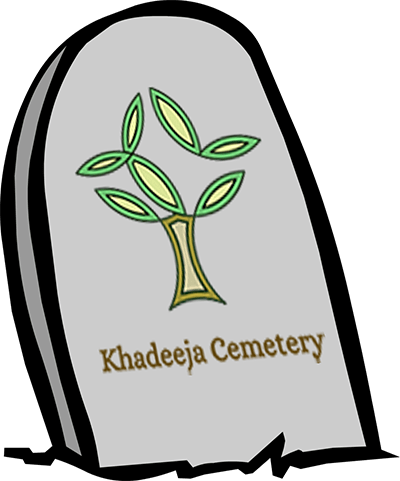Khadeeja Cemetery COVID-19 Burial Guidelines
Covid-19 Burial Guidence Document
Effective date April, 2020
Revision 1
1.0 Purpose
COVID-19 or novel Coronavirus is very new, and little is known about it, so hygienic preparations and safety precautions should be taken. Health officials, researchers, and hospitals are of the view that the deceased could infect up to three days after death. It has been confirmed that the virus can survive on metal and plastic surfaces; thus, it seems very possible the deceased body can continue to carry the virus. Additionally, World Health Organization (WHO) has published guidance for ‘Healthcare Workers’ for PPE to be worn when there is close contact with confirmed or suspected COVID-19 individuals which should include the following: Surgical face mask, Apron, Gloves, and Eye Protection (if the risk of contamination of eyes by splashes or droplets). This document first outlines general consensus on the Islamic Guidelines during the times of a pandemic that Khadeeja Cemetery will follow. Secondly, it establishes Khadeeja Cemetery’s process in the handling of the deceased in accordance with the Islamic jurisprudence and requirement from Local and Federal Government agencies. This guidance document can be used for any other pandemic situation that arises when there is a potential risk of any exposure to contagious or vial disease.
2.0 Islamic Guidelines
In general, the chronological methods determining ghusl for both men and women:
1. Full Sunnah Ghusl (body washing)
2. If the above is not possible, pour water over the body thrice or less (once is also sufficient). If using a pipe, apply water with a bit of force around so that areas of impurities are washed.
3. If the above is not possible, then perform Tayammum directly on the body. If it is not possible to do this using the bare hands, then use a cloth or gloves to do this. The key is that the hand or glove that has touched the soil/dust must touch the skin of the deceased.
4. If the above is not possible, then bury without Ghusl or Tayammum. Janazah Salah to be performed using national social distancing guidelines.
During the current COVID-19 Pandemic, if Ghusl is taking place for people who did not die from nor are suspected to have had COVID-19, we do not need to follow Method 1. If there is a risk present in following the standard Sunnah method of Ghusl, pouring water over the body once (Method 2), is sufficient. If Ghusl cannot be done, the best alternative for us is Tayammum directly on the body.
• If bodies are not sealed, Ghusl (using Method 2) can be done. If the body was sealed and can be opened, then every effort should be made to perform Ghusl or Tayammum by strictly adhering to the precautionary measures, including the use of PPE. If opening the sealed body bags is not allowed, or it is proven to pose a risk of infection due to the build-up of fluid and gas, we would not perform Ghusl and carry out Tayammum using a cloth or gloves. If the possibility of Ghusl is uncertain, it is advised to undertake Tayammum immediately after death or before the body is sealed in a body bag. It is advised that the number of people involved during the bathing and shrouding process is kept to a minimum.
• If Ghusl is not possible due to a valid reason such as the appropriate PPE not being available, or the lack of adequate facilities, Tayammum will be performed on the face and arm (hand to elbow) of the deceased using gloves. Tayammum is the option only if it is possible for the hand or glove that touched the soil/dust to touch the actual skin of the face and the hands of the deceased. This can be directly by using the bare hands or it can be via the use of gloves or a piece of cloth.
• In relation to the shroud (kafan), if Ghusl is taking place and the body bag is not used, the deceased will be shrouded in the usual way. If Ghusl is not taking place, the deceased may have some form of clothing or body shroud when inserted into a body bag. Therefore, if the body bag is not transparent or translucent (semi-transparent), it is not necessary to apply any further shroud. It is recommended to cover the entire bag with one piece of white cloth for the shroud. If the body bag is translucent, then this would be recommended. If the body of the deceased is covered with white before its inserted into the body bag and in addition to the clothes the deceased is wearing, there is no need to cover the body bag with a further white shroud.
• There has not been any significant basis established for pouring water or performing Tayammum or Masah over the body bag, because the body bag is totally separate from the body, and the water does not reach the actual body. Its generally agreed that Ghusl and Tayammum on the deceased is only valid if it reaches the body. Therefore, if Ghusl or Tayammum is not possible directly on the body, the body will be buried without any further action on the body bag.
• Islam also permits mass burials where there is a need, so this option can also be considered as needed. Every effort should be made to bury the deceased individually and we should supplicate to Allah that we do not reach a stage where this becomes difficult. However, if we reach this stage, and individual burials become difficult due to the unavailability of graves or due to the high number of deaths, it would be permitted to bury more than one Muslim person in a grave. In this scenario, men and women should be buried in separate graves. In addition, some form of a barrier, for example, wooden planks or soil, can be placed between the bodies. It is also possible to have multiple layers in a grave separated with wooden planks or similar.
• In extreme situations where there are a large number of deaths, a non-Muslim staff member of the hospital or other authority if willing, can prepare the deceased prior to sealing the body in a body bag; if this is the only option available and staff member is of the same gender as the deceased; he/she should be requested and briefed on how to do it according to the aforementioned Islamic guidelines.
• We should use our flexibility and engage constructively with the local government and health agencies to ensure that cremation is avoided. Every possible effort must be made to ensure that cremation is not done on Muslim bodies.
3.0 Khadeeja Cemetery Process
Non-Coronavirus Related Deaths
If the aforementioned PPE with a surgical face mask is available and there are adequate facilities, Ghusl or Tayummum can be performed. All efforts will be made to source the PPE and establish adequate Ghusl facilities with the highest standards of safety and hygiene to minimize any risk.
• Due to the current risk level, Khadeeja Cemetery can only accommodate Tayammum and the covering of the deceased body (kafan).
• The least number of people should be present and participate in the burial process. All the necessary precautions must be taken in relation to hygiene and cleaning and the disposal of waste.
If Tayammum is not possible because of the high risk of infection, or because of the sealed body bag, the body will be buried without Tayammum or Ghusl.
Coronavirus Related Death and Known or Suspected Coronavirus Carrier:
No Ghusl or Tayammum due to Coronavirus related death or for the deceases suspected Coronavirus carrier. Since Ghusl or Tayammum is not possible and the body is sealed in the body bag, Salat al-Janazah will be performed and the body will be buried (without Ghusl or Tayammum.)
• In this scenario, water will not be poured over the body bag, nor will Tayammum or Masah be done over the body bag. This is because the substitute for Ghusl is Tayammum. If Tayammum directly on the body is not possible, there is no further substitutes.
4.0 Cemetery Guidelines
• Every deceased person whose death is unknown will be treated as if or assumed to have had Covid-19.
• All members of the Burial Team and Volunteers should adhere to their job roles and assignments for efficiency and their own safety as well as the safety of the community. For those that are responsible for directly handling bodies of the, deceases must strictly adhere to the precautionary measures, including the use of PPE. For Covid-19 related deaths, those who are at high risk from the disease or spreading it, will not be allowed to participate in the burial process or handling of the deceased bodies. This includes those who are elderly or over the age of 60; those with corresponding health issues (e.g. asthma, lung conditions, any cardiovascular or diabetes issues.);, etc.
• Social Distancing will be strictly followed during the Janazah and Burial Process. The number of people involved during the ghusal/ Tayammum and shrouding process will be kept to a minimum. In accordance with CDC guidelines for any type of gathering, the Burial process will not exceed the maximum of 10 people. Only Janazah/Burial team members are allowed to carry out the burial service for COVID 19 and people with unknown cause of death. This includes; burial committee members (Umair, Yusuf, Khalid, others.) the Imam.
• Main point of contacts are: (1) Br. Maqbool (2) Br. Afridi (3) Br. Umair (4) Sis. Alia. These contacts will conduct the communication explaining to the family of the deceased, the ISGSL Burial Guidelines. Br. Maqbool is the point of contact for the hospital. If any EC members or volunteers get contacted from family members of the deceased, they must refer them to the priority list of contacts.
• The body will arrive at the gravesite. The family members will not be permitted to attend the Janazah. In order to follow the maximum number of individuals allowed in a gathering and to prevent those directly exposed to COVID-19 from infecting others, Video Broadcasting Service such as Facebook oy any other means ( Live) will be used to share the Janazah with Family Members and Friends.
• If the cause death is not related to COVID-19, Family is allowed to participate in Janaza; social distancing will be required. The number of people, including those involved with the burial process, will still not exceed more than ten. No interaction will be permitted by the family with the body of the deceased or volunteers.
• Family members are responsible for bringing their own safety and personal protective equipment if they choose to participate in the burial. Families must follow the protocol of The Cemetery team’s guidelines and directions.
• The cemetery will be open to the public from 10 am-7 pm. Protective gear like gloves and masks should be worn by visitors at all times while following social distancing guidelines. Community members exposed to COVID-19 or those that display symptoms cannot visit the cemetery.
• Tayammum will be performed and the covering of the deceased body with (kafan).
• If This is not possible, Shroud cloth will be put over the body the deceased and then sealed in the box in accordance with the abovementioned Islamic Guidelines. Body bags will be provided by the hospital. If a body bag is not provided, the Goff Mortuary will bag and box the deceased body before it arrives at Khadeeja Cemetery.
• Br. Maqbool will fill out paperwork, and the family will provide signatures for the documentation after the burial or whenever it is safe and convenient to do so.

